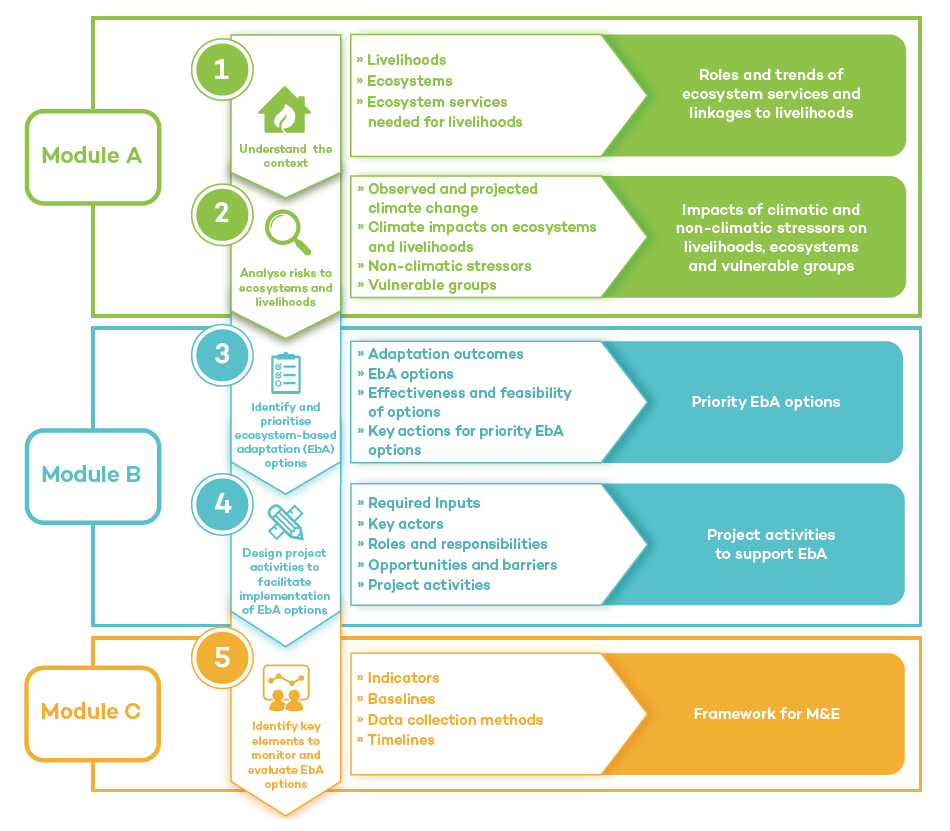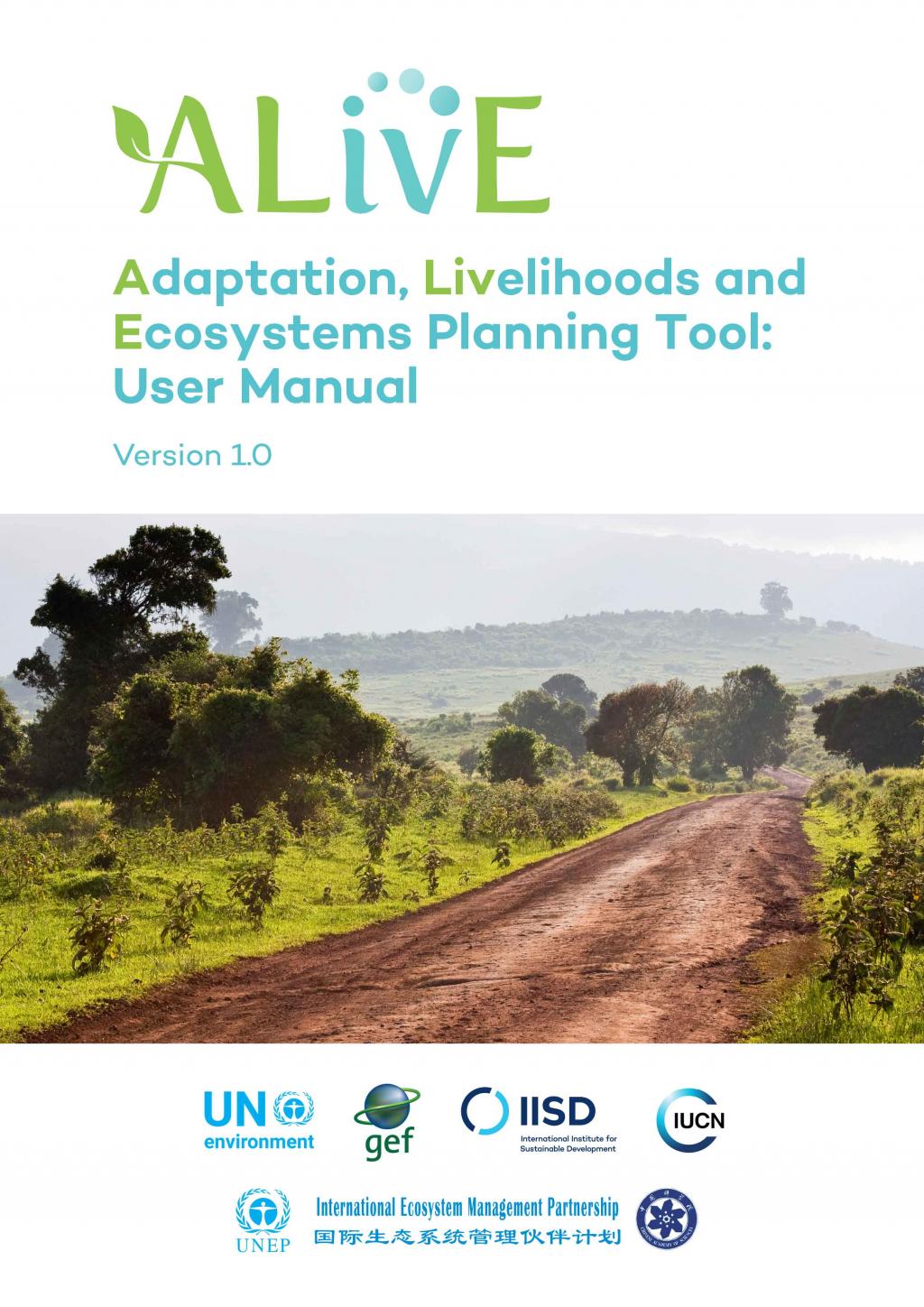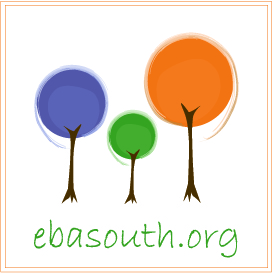ALivE - Adaptation, Livelihoods and Ecosystems Planning Tool
ALivE is a computer-based tool designed to support its users in organising and analysing information to plan effective Ecosystem-based Adaptation (EbA) options within a broader EbA planning process. ALivE stands for Adaptation, Livelihoods and Ecosystems.
ALivE is a rapid qualitative assessment technique that can be applied in any ecosystem, enabling the user to:
- Understand and analyse linkages among ecosystems, livelihoods and climate change.
- Identify and prioritise EbA options for community and ecosystem resilience.
- Design project activities that facilitate implementation of priority EbA options.
- Identify key elements and indicators for a monitoring and evaluation (M&E) framework.
ALivE is organised into three modules and five steps that build on each other:
- In Module A, you will systematically analyse links among ecosystems, livelihoods and climate change, to better understand vulnerability to climate change and the role of ecosystems in adaptation.
- In Module B, you will identify and prioritise EbA options for community and ecosystem resilience and design project activities that facilitate implementation of priority EbA options.
- In Module C, you will identify key elements and indicators for a monitoring and evaluation framework.
ALivE Framework

Frequently Asked Questions
Who is ALivE for?
The target audience of ALivE is made up of two groups: users and stakeholders. Expected users of ALivE include project managers and practitioners working at the local or community level designing or implementing an EbA intervention. The secondary audience consists of stakeholders in the EbA planning process, including community members, local authorities, NGOs and policy-makers. Users of the tool will work closely with these stakeholders.
When should I use ALivE?
ALivE is designed to be applied in the context of a larger adaptation project that has already established an objective to integrate EbA options. The tool should be applied during the design phase of such an initiative. It will be most effectively used in places where strong relationships with stakeholders have already been established.
Why should I use ALivE?
ALivE takes a step-by-step approach to identify EbA options, taking local ecosystems, livelihoods and climate change into consideration. It provides you with a user-friendly process to determine whether EbA options are feasible and likely to be effective. ALivE also helps you to identify elements for an M&E framework during the planning stage.
What do I need?
Users will need to have access to a computer and internet connection to download the tool. However, the tool itself can be used offline. Access to existing information and analysis on ecosystems, livelihoods and climate change in the target area will provide input to the tool. Expertise in climate change adaptation and ecosystem restoration, conservation and management are useful but not mandatory.
How long will it take?
ALivE is a computer-based analysis that relies on information collected from desk-based and participatory research processes. The time required to undertake the gathering of information will vary and depend largely on the scope of the analysis, the amount of information already available about the target area and the existing relationships with local stakeholders. Once all information has been collected, using ALivE will generally only take a couple to a few days.
What doesn’t ALivE do?
ALivE is not a substitute for a stand-alone comprehensive climate risk assessment or detailed environmental assessment. It does not take users through all of the steps and stages involved in a full project planning cycle. ALivE does not include a cost-benefit analysis for EbA options.
We recommend that users review and familiarize themselves with the user manual before launching the computer-based tool. The user manual provides you with detailed guidance on applying ALivE as part of an EbA planning process. In addition to step-by-step instructions for using the tool itself, the manual provides a framework and methodologies for collecting and organising the information required to use ALivE, as well as guidance on identifying entry points for integrating EbA into policies and planning processes.

Download the User Manuals:
- English (PDF 5.85 MB)
- French (PDF 5.87 MB)
- Spanish (PDF 4.26 MB)
- Nepali (PDF 3.71 MB)
- Chinese (PDF 5.75 MB)
- Russian (PDF 4.8 MB)
Download the ALivE tool:
If you have a story to share about using ALivE – how it was applied, the benefits and challenges, of how we could modify the tool to better meet your needs, please send an email to aterton@iisd.ca.

Latest
You might also be interested in
Trade and Climate Change
IISD project on trade and climate change
Adaptation of Agricultural Value Chains to Climate Change in Madagascar
Working toward the sustainable financing, realization, and scaling of prioritized climate adaptation measures in Madagascar’s agricultural sector.
IISD Next: Campus Workshop Series on Sustainability
A free workshop series on sustainability to educate and empower youth worldwide with tools on policy, sustainable development goals, and more.
China Council for International Cooperation on Environment and Development - CCICED
The China Council for International Cooperation on Environment and Development (CCICED) was founded in 1992.



